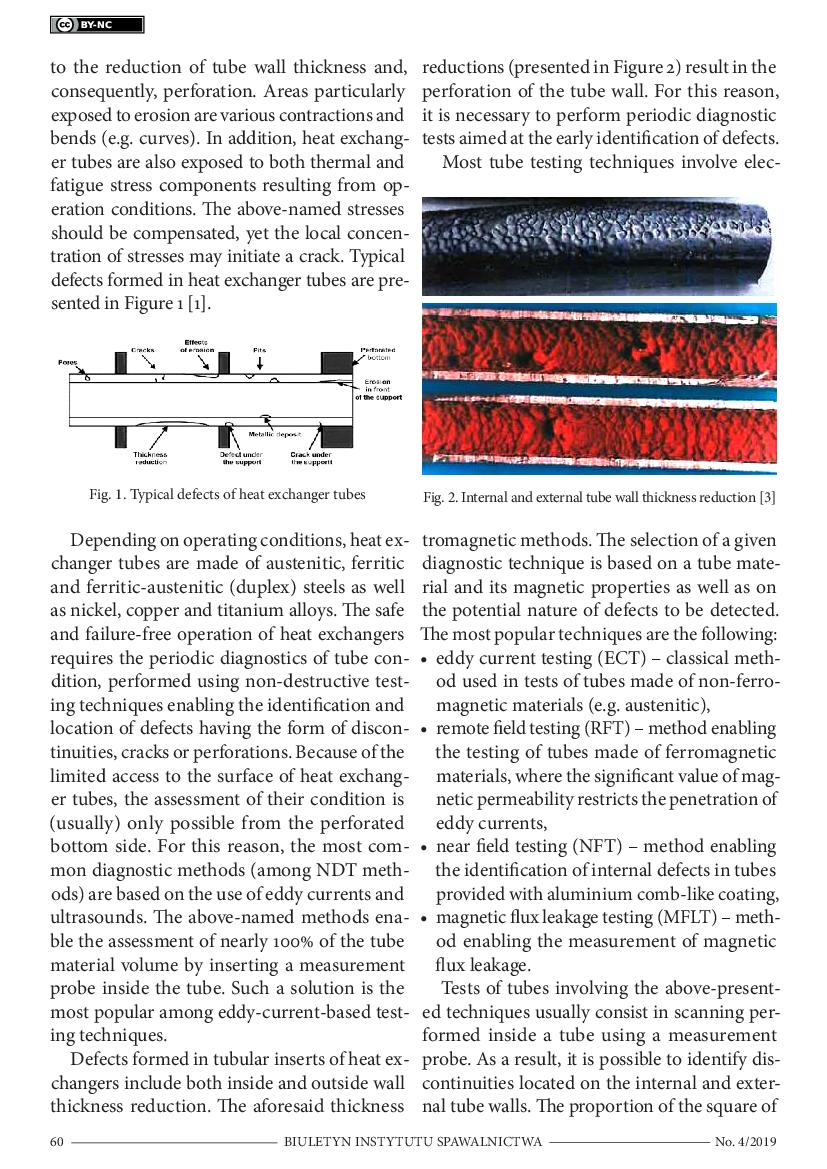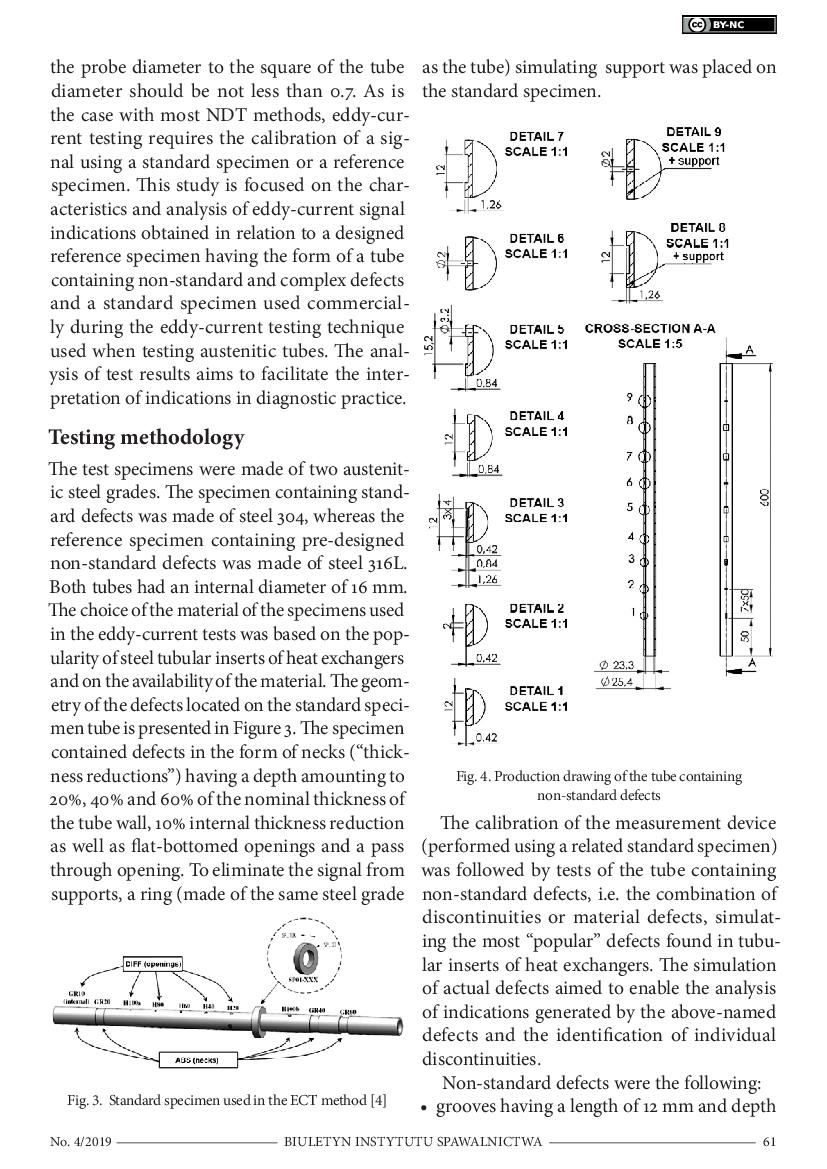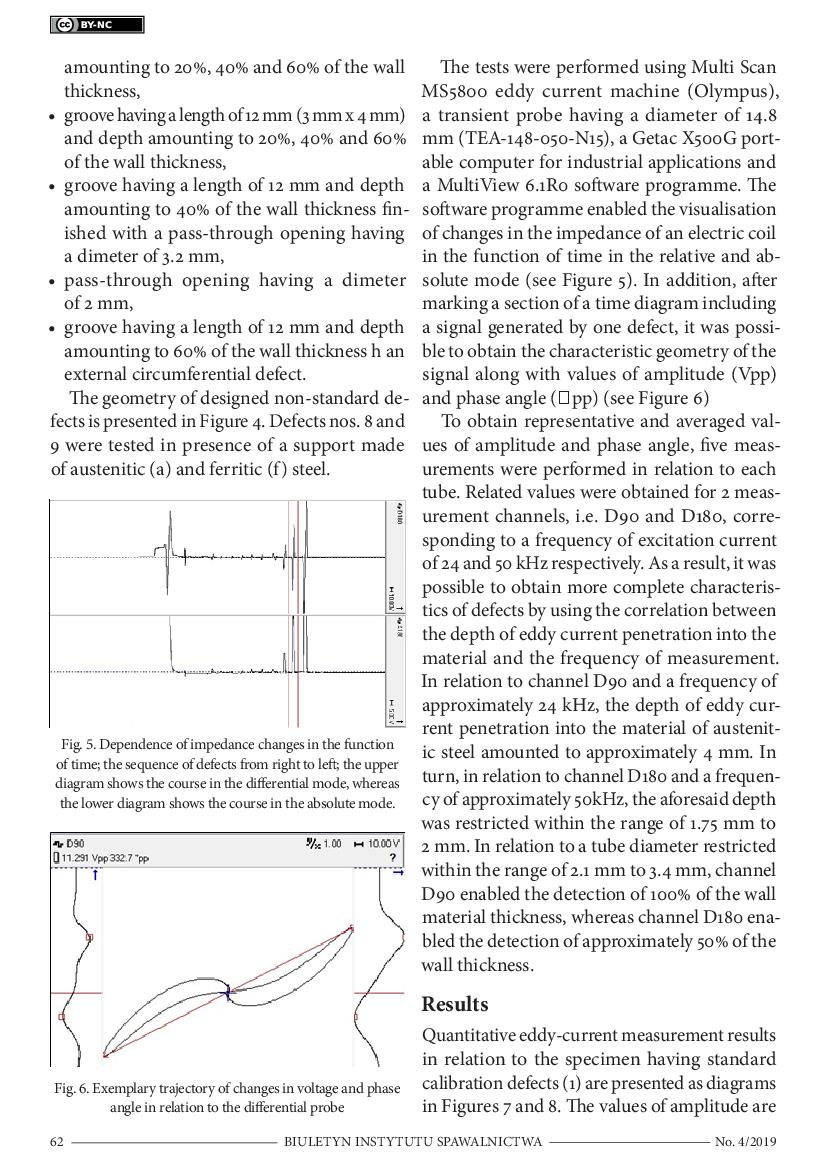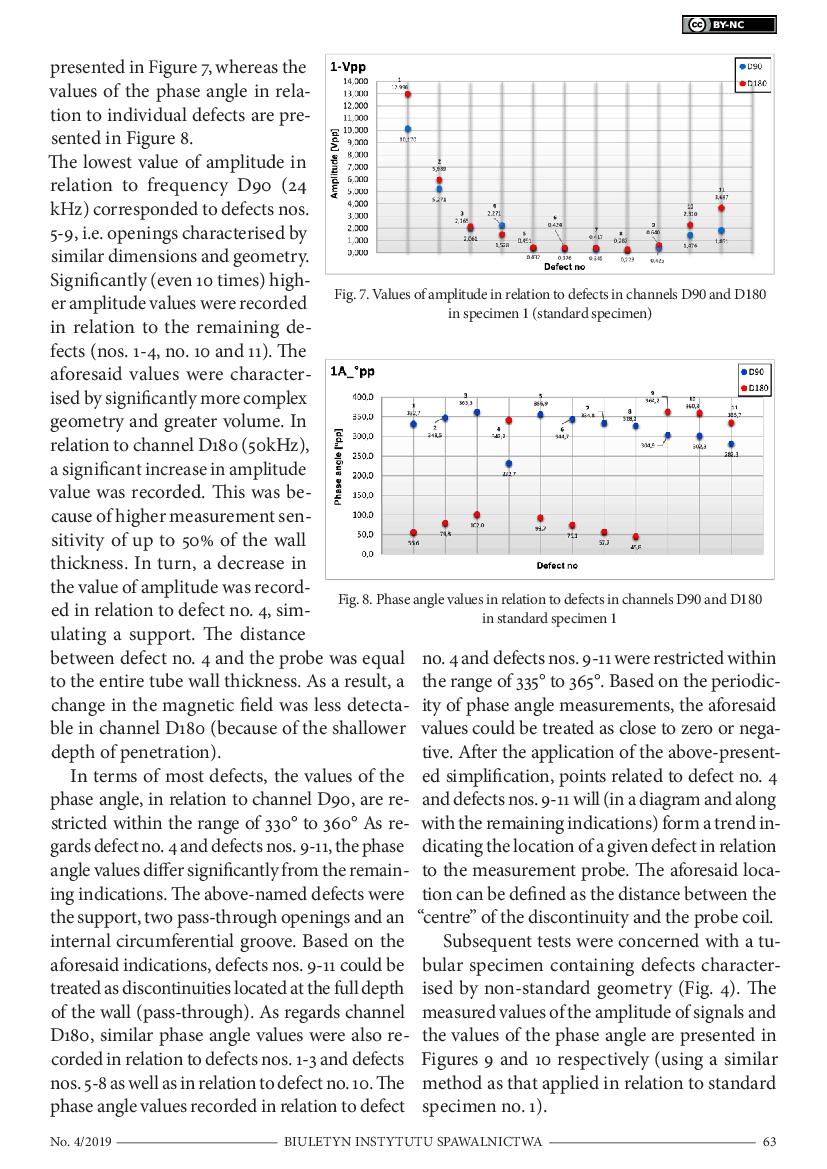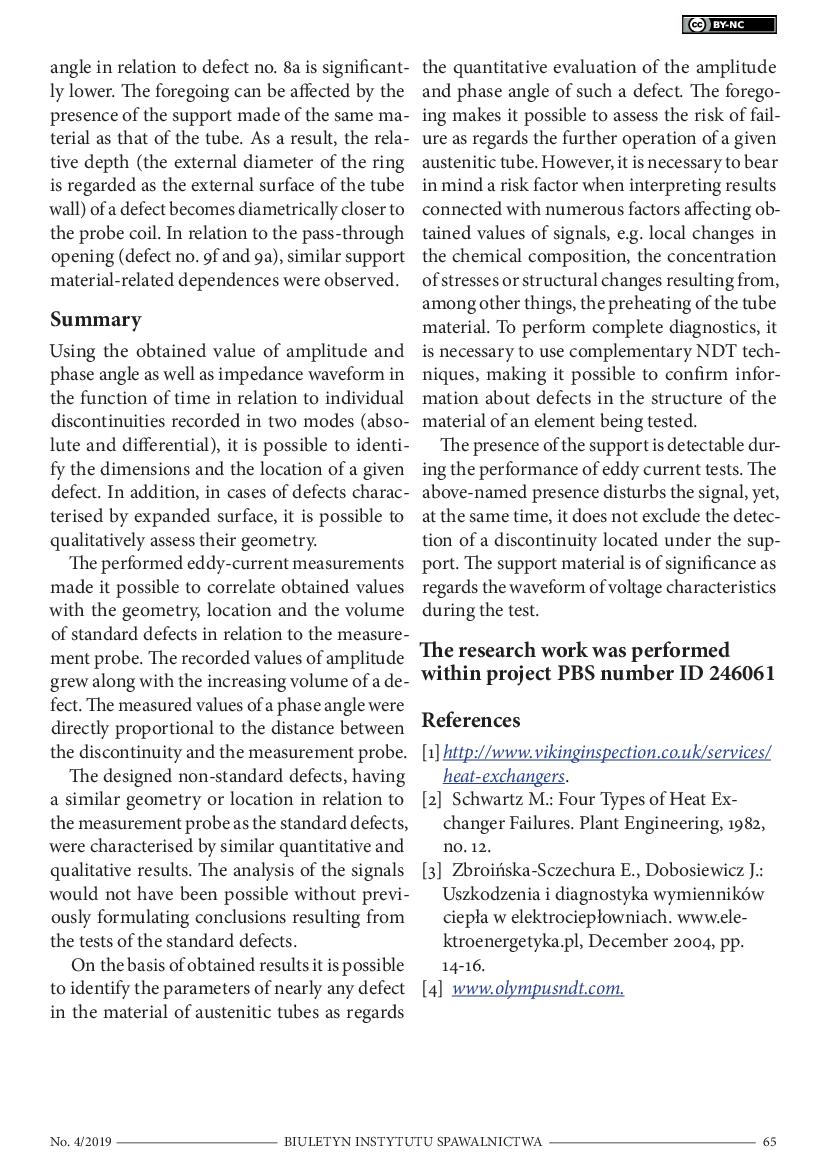Quantitative Evaluation of Eddy Current Signals Generated by Defects in Austenitic Heat Exchanger Tubes
The research discussed in the article involved the analysis of impedance characteristics originating from various non-standard defects detected in the material of an austenitic tube. Research-related test results were obtained when scanning a tube made of steel 316, using an internal probe and a MultiScan 5800 device. The tests involved the use of the classical ECT vortex current method applied to examine both the tube containing artificial defects, simulating the most common defects in industrial heat exchanger tubular inserts, and reference tubes containing standard defects. The non-standard defects (created artificially) simulated combinations of cracks, pits or other defects formed as a result of exposure to aggressive chemical and mechanical factors present in industrial conditions. The tests involved the scanning of the entire length of the tube at a constant rate. The tests were performed using a transient probe recording electrical impedance changes in a relative mode and in an absolute mode. The interpretation of results related to the non-standard defects was based on a comparison with the results obtained in relation to the standard reference defects. Values obtained in relation to the non-standard defects enabled, among other things, the identification of their volume and position in relation to the measurement probe. In most cases it was not possible to interpret the geometry of a given defect. The foregoing could be achieved using other non-destructive testing techniques.
doi: 10.17729/ebis.2019.4/6
 1 / 7
1 / 7
 2 & 3 / 7
2 & 3 / 7
 4 & 5 / 7
4 & 5 / 7
 6 & 7 / 7
6 & 7 / 7


